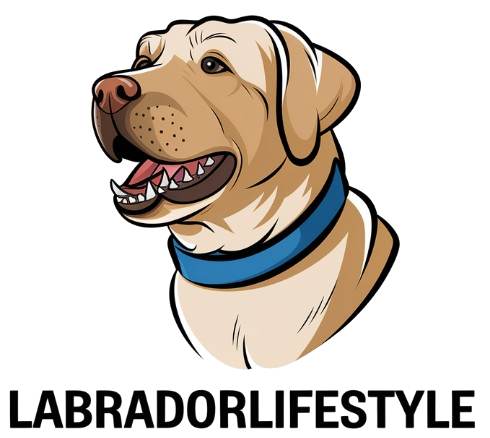Table of Contents
- Introduction
- Understanding the Labrador Breed
- Preparing Your Home for a Labrador
- Feeding Your Labrador
- Grooming and Hygiene
- Training and Socialization
- Exercise and Play
- Health Care Essentials
- Time, Commitment & Routine
- Helpful Resources
- Conclusion
- FAQs
1. Introduction
If you’re a first-time dog owner looking for a trusted and complete Labrador Care Guide, you’ve come to the right place. Caring for a Labrador requires love, patience, and understanding — and this guide will help you through every step of the journey.
Labradors are known for their loyalty, intelligence, and joyful energy — but raising one takes knowledge, time, and love. This guide is specially designed for first-time owners to help you understand every aspect of Labrador care. From feeding and grooming to training and health, we’ll cover everything you need to give your Labrador the happiest, healthiest life possible
.
2. Understanding the Labrador Breed
Breed Characteristics
Labradors are friendly, energetic, and highly intelligent. They were originally bred as working dogs, and today, they’re among the most popular family pets worldwide.
Personality and Temperament
Labradors are outgoing, eager to please, and usually get along well with children and other pets. They thrive on
companionship and can become anxious if left alone for long periods.
Types of Labradors
- English Labradors: Stockier, calmer, and often used for show.
- American Labradors: Leaner, more energetic, and bred for field work.
3. Preparing Your Home for a Labrador
Puppy-Proofing Your Space
Secure wires, remove harmful objects, and block access to unsafe areas. Labradors are curious, especially as puppies.
Must-Have Supplies
- Crate and bedding
- Leash and collar
- Food and water bowls
- Toys for chewing and mental stimulation
Creating a Safe Space
Designate a quiet corner of your home as their safe zone, with their crate and a few favorite toys.
4. Feeding Your Labrador
Recommended Diet
- Puppies: High-protein, growth formula dog food.
- Adults: Balanced adult dog food.
- Seniors: Lower calorie, joint-supporting diet.
Feeding Schedule by Age
- Puppies (8–12 weeks): 4 meals/day
- 3–6 months: 3 meals/day
- 6 months+ and adults: 2 meals/day
Foods to Avoid
Chocolate, grapes, onions, garlic, bones, and high-fat human food.
Healthy Treats
Carrot sticks, apple slices (no seeds), store-bought treats with limited ingredients.
5. Grooming and Hygiene
Coat Care
Brush your Labrador’s coat 2–3 times a week to remove loose fur and reduce shedding.
Bathing Tips
Bathe once every 4–6 weeks with a dog-friendly shampoo. Avoid over-washing, as it dries the skin.
Nail, Ear & Dental Care
- Trim nails monthly
- Clean ears weekly
- Brush teeth several times a week
6. Training and Socialization
Start Training Early
The earlier you start, the better. Use positive reinforcement methods.
Basic Commands
Teach sit, stay, come, down, and leash walking. Keep sessions short and fun.
Crate & Potty Training
Use the crate for safe sleeping and potty training. Take them out frequently and reward success.
Socialization
Expose them to different people, animals, and environments from a young age to build confidence.
7. Exercise and Play
Daily Exercise Needs
Labradors need 1–2 hours of physical activity daily. Include walking, running, and play.
Mental Stimulation
Puzzle toys, scent games, and basic obedience training keep their minds sharp.
Fun Activities
Fetch, swimming, and hiking are great ways to bond and burn energy.
8. Health Care Essentials
Common Health Issues
- Hip and elbow dysplasia
- Obesity
- Ear infections
Vet Visits
Schedule regular check-ups every 6–12 months. Keep vaccinations up-to-date.
Parasite Prevention
Use vet-recommended flea, tick, and heartworm preventatives year-round.
9. Time, Commitment & Routine
Sample Daily Routine
- Morning walk & breakfast
- Midday play/training
- Evening walk & dinner
- Night potty break & calm time
Lifestyle Balance
Labradors need your time and attention. Plan ahead before adopting one.
Signs of Stress
Chewing, barking, or hiding can indicate boredom or anxiety.
10. Helpful Resources
Recommended Media
- Books: The Labrador Handbook by Pippa Mattinson
- Blogs: LabradorTrainingHQ, The Labrador Site
- YouTube: Zak George, Simpawtico Dog Training
Local Support (Optional)
Find reputable trainers or vets in your area. Join Labrador Facebook groups or dog meetups.
Pet Insurance
Consider insuring your Labrador to manage future vet costs.
11. Conclusion
Owning a Labrador is a rewarding experience filled with love and laughter. With proper care, your Labrador can live a healthy, happy life by your side.
Take time to learn, be patient, and enjoy every moment. Have tips or questions? Drop them in the comments!
FAQs
How often should I feed my Labrador?
Twice a day for adults; puppies may need 3–4 smaller meals.
Are Labradors easy to train?
Yes! Their intelligence and eagerness to please make them one of the easiest breeds to train.
Do Labradors need a lot of exercise?
Absolutely. Expect to provide at least 1–2 hours of activity daily.
Meta Description (SEO):
Looking for the best Labrador Care Guide? Learn how to care for a Labrador with essential tips on feeding, grooming, training, and health for first-time dog owners.
Tags: Labrador care, Labrador puppy tips, Labrador training, dog grooming, first-time dog owner
Slug:labrador-care-guide-for-first-time-owners
Internal Link Suggestions:
- [Best Toys for Labradors]
- [Labrador Puppy Training Tips]
- [Labrador Diet Plan by Age]
